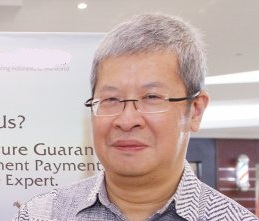Case Document
GOOGLE’S CHINESE COMPROMISE: A CAPITALIST CAPITULATION?
BUKABUKU.COM – SELECTION, CONVENIENCE, AND PRICE
For Bukabuku.com, 2009 was a great year. The company closed the year with 37% more revenue than in 2008, which was on top of the 122% jump the year before. Everyone in the company celebrated this success and looked forward to a better 2010.
On the last day of work in 2009, Bukabuku.com’s founders Erwan Salim and Marsela Wewengkang called all their managers to the year-end meeting that would set the path of 2010. Despite the great success, they received signals from the marketplace that the Bukabuku.com’s growth momentum in the past four years had slowed down. While it might be a good time for consolidation after a series of explosive years, the slowdown was perceived to be coming too soon.
They needed to discuss this issue, set new expectation, and prepare the company’s direction for 2010. They had to decide on the following issues:
- Customer backorders and late deliveries: These sometimes led to sales loss and always to customer dissatisfaction. While most of this problem had been solved by increasing on-hand inventory, they felt the need to get to the root cause of the problem.
- Full warehouse capacity: Could they optimize their inventory level or should they look into getting a second warehouse?
- Internal business process and information system: Could they continue to rely on the company’s current processes to support future significant growth?
TIMAH: STRATEGIC IT TRANSFORMATION TO WORLD-CLASS TIN MINING
When Alwin Albar was assigned as the head of information system (IT) in late 2007, Timah was running an outdated software package to support its core transaction processing. His CEO, Wachid Usman, required a system that can be accurate and contain live information about the business. Timah needed a system that would give it better visibility of the performance of Timah’s diverse operation. Timah had implemented SAP software, but to get the level of information it wanted, the company required the ability to monitor data from production to sales and beyond. In addition, Timah required a supply-chain operation – from mining, production, and distribution – integrated with the company’s financial statement in order to increase its efficiency, as well as to provide the board with the ability to formulate faster and more accurate decision-making capabilities, thereby facilitating the conversion of product from the pit to the customer.
After approval and full support from the CEO, Wachid Usman, Timah prepared a detailed plan to execute this IT strategy. This was not an easy task. The existing platform used an old, legacy architecture that became obsolete when maintenance support ended in 2009.
IT BLUEPRINT READINESS FOR JAKARTA INTERNATIONAL MULTICULTURAL SCHOOL
Alexander Irwan, owner of Jakarta International Multicultural School, would like to invest in an IT solution that is aligned with the school’s vision. To translate the high-level aspect of the vision into doable elements, an IT blueprint be produced.
This case details how a team (the Mars Team) built the IT blueprint from start to finish. When the project had run during its first month, some tasks identified as low priority became more important. The project began to show signs that final implementation could be delayed. While there was no need to increase budget yet, Alex wanted to measure his organization’s readiness to accept the change. He wanted to have a readiness assessment.
TAKING THE LEAP: FROM PORN TO STAR
In 2008, Kaskus was voted as one of the most visited Indonesian websites according to Alexa.com. Kaskus was an online forum community which had grown by the word of mouth marketing of its members and mainly consisted of a user-generated content forum and a trading section. This local forum already had more than 350,000 loyal members who called themselves “Kaskusers” and participated in their own community culture. Kaskus contained a discussion forum with sub-forums covering a variety of topics including games, the buying and selling of goods, sports, automotives, and many others. What was unique about Kaskus was that it maintained all of its content in Bahasa Indonesia.
Its notorious BB-17 forum which mainly consisted of porn content, was heavily associated with KASKUS by the Indonesian Internet community. This burdened KASKUS’s image and its attempt to capture the tremendous growth of Internet users in Indonesia at that time. Facebook, Friendster and other online social networks has been grown explosively in Indonesia. At the same time, a new law on information and electronic media, Law No.11/2008 on Electronic Information and Transaction (ITE), came into effect and ruled that websites should not contain pornographic content. Therefore KASKUS were left with no choice but to drop BB-17. However, building a new positive image would be no an easy task.
With the new board of management, Ken Dean Lawadinata (CEO), Andrew Darwis (founder, CIO) and Danny Oei Wirianto (CMO), Kaskus was facing a dilemma whether they should remain exclusive or becoming a mainstream online content.
BLUE BIRD GROUP: A RELIABLE TRANSPORTATION PARTNER
The timeline of this case began in June of 2003, while Ms. Noni Sri Ayati Purnomo, Vice President of Business Development at the Blue Bird Group, was preparing her presentation for the company’s President Director. She had to make decision to improve the business process to comply with ANDAL – “aman, nyaman, mudah, and personalized” – translated to “safe, comfortable, accessible, and personalized”). Ended in 2004, the company developed and implemented the ERP system with several challenges, such as in maintenance process, inventory process, and also human resources.
PT EDPMEDIA: GO SIX SIGMA?
On August 2007, Mr. Eddie Cendana, the CEO, was very irritated when he received another complaint from one of the most important clients of PT Edpmedia Multimitra Primanusa. There were increasing complaints and dissatisfaction from customers over the last few months, so he decided to initiate the Six Sigma program to improve the quality for the company.
The Six Sigma project at PT EDPMEDIA started in January 2008 using the DMAIC 5 stages approach, namely Define, Measure, Analyze, Improve and Control. In the first stage, PT EDPMEDIA had set the CTQ (Critical to Quality) and CTP (Critical to Process) targets, which were based on results of the extensive customer and employee surveys. They had discovered that the CTQ and CTP issues were employees’ workload, productivity and training. The surveys proved that the three factors contribute the most significant percentage towards customer satisfaction and royalty. In the second stage, a number of measurement and capability tests were conducted. The results showed that the company must start immediate improvements to employee productivity. The analyzing stage indicates that the employee productivity figure was affected by:
- 45% - workload factor;
- 32.5% - lack of training;
- 30% - job satisfaction.
When the project neared the end of its implementation stage in early 2009, the company employee productivity had increased to 3.69 from the initial target of 3.5. Another related indicator such as Hour Service Rate had also increased close to 75% from the target of 70%. So the CEO claimed that the Six Sigma project initiative was successful though more improvements and optimal benefits were anticipated further in the future.
ASAHIMAS IN FACING THE OIL PRICE INCREMENT IN 2005 AND ITS EFFECT TO THE COMPANY BUSINESS
In 2006 Asahimas recorded net sales value of Rp 1.5 trillion or 10 % decreased compared to 2005. The increasing oil price was the culprit. Actually, the feasibility study to change the fuel for combustion process to natural gas had been done before 2005. Unluckily the increasing oil price advanced the progress of the project.
Then, early in 2006 the company established a task force team to continue the study of fuel conversion. The aim of the team was to reduce cost of production, the conversion should be done without loss of production, no materials in the flat glass process should be changed, and the project should be completed as soon as possible.
Despite the noble aim of the project, questions still remained for the management were : should they continue the conversion program ? Regarding the big value to invest, should they apply to all plants or not? What was the plan B if the conversion was done and the price of natural gas increased?
ABN AMRO SOFTWARE DELIVERY MANAGEMENT
ABN AMRO, the oldest foreign bank in Indonesia, had a reason to have an internal IT Delivery Management. While still maintaining its role on the banking industry, the bank could avoid depending too far on some external suppliers when it came to satisfying its information technology requirements. The IT Delivery Management project manager therefore acted as a middleman that balanced between the due-date pressures that the bank defined as an acceptable scope, and the capability of the technically knowledgeable vendors to understand what the specifications actually required.
MARTHA TILAAR: INNOVATIVE PRODUCT DEVELOPMENT OF BOTU-LIKE
One Sunday in 2005, while with her family in one of Jakarta’s popular shopping malls, Mrs. Martha Tilaar, the Chairman of PT. Sari Ayu Indonesia, accidentally overheard two women debating the pros and cons of receiving Botox injections[1]. The passing conversation brought back previous thoughts on how to harness Indonesia’s natural resources, and fashion these resources into products which would be as effective as foreign brands but with the advantage of using natural (and thus safer) ingredients.
In her years of working in the world of cosmetics, Mrs Tilaar had so far gained much from innovative improvement – whether these came from her Brand Department together with R&D Department, or from Mrs. Tilaar herself. She always managed to differentiate her products from those of other companies without discarding their most important ingredients. Nonetheless, the differentiation ensured that the marketed products were safe to both user and environment. For example, the latest product series, Biokos Botu-Like, was created to leverage the brand as high-end anti-ageing treatment, which was expected to compete with similar, foreign-manufactured products marketed by well-known international cosmetics brands.
Nevertheless, Mrs Tilaar wondered whether this continuously-explored innovation process was able to grasp what the market needed and wanted. Would it prove to be profitable to the company in the end? What breakthrough idea could be drawn up to gain more market expansion? There was a plethora of ideas – but how could one pick the most appropriate one to develop? Lastly, how sustainable would the products be?
Botox is a type of beauty treatment conducted by experienced, qualified and board certified doctor in order to reduce facial wrinkles.









